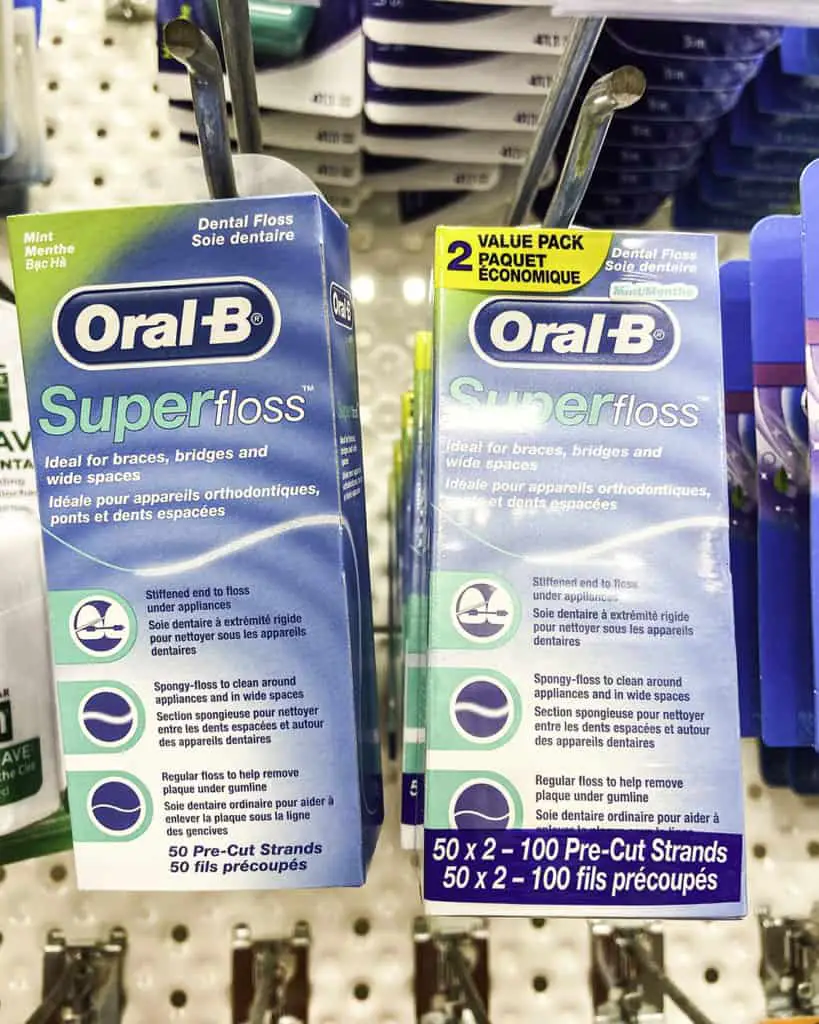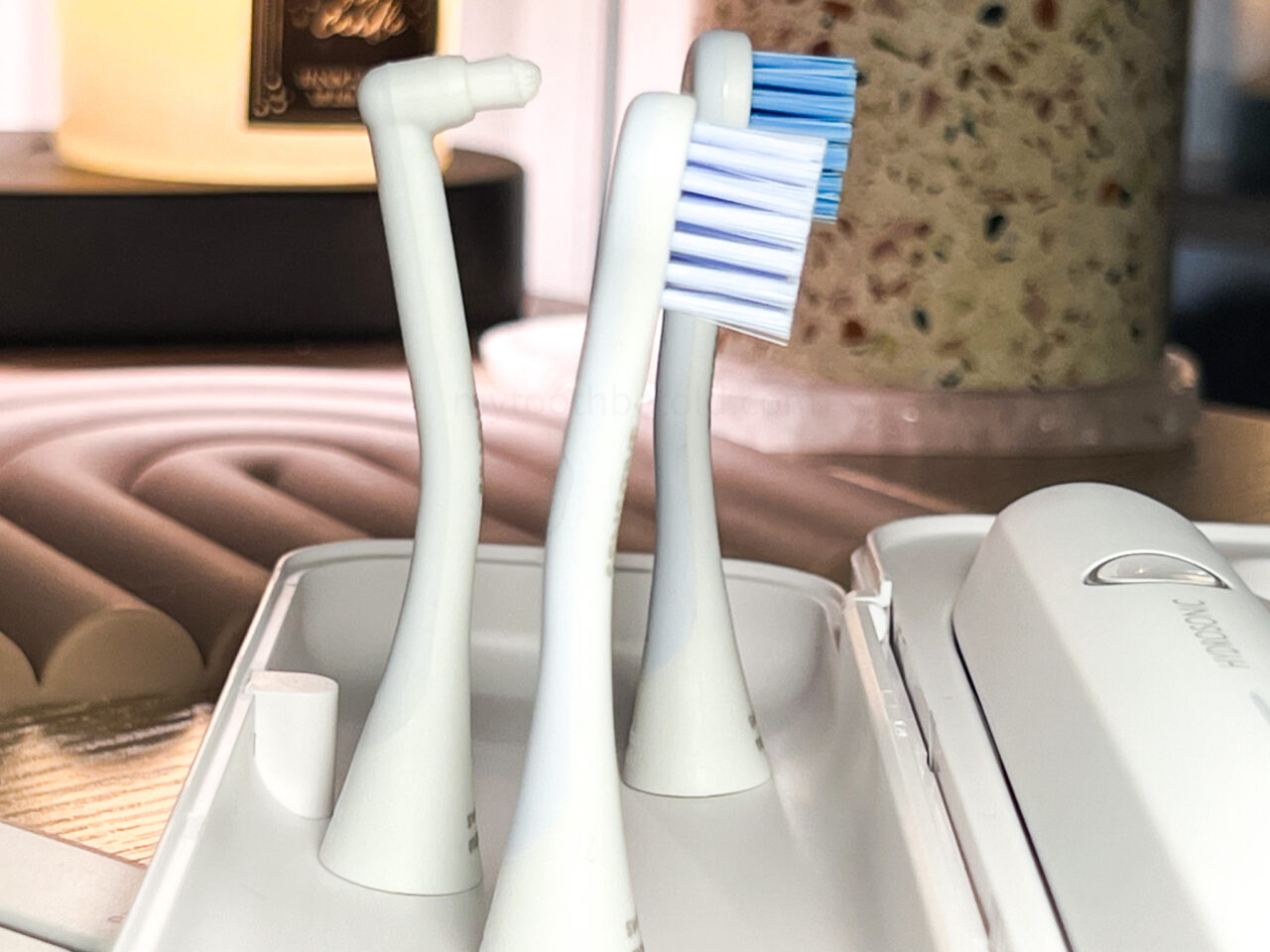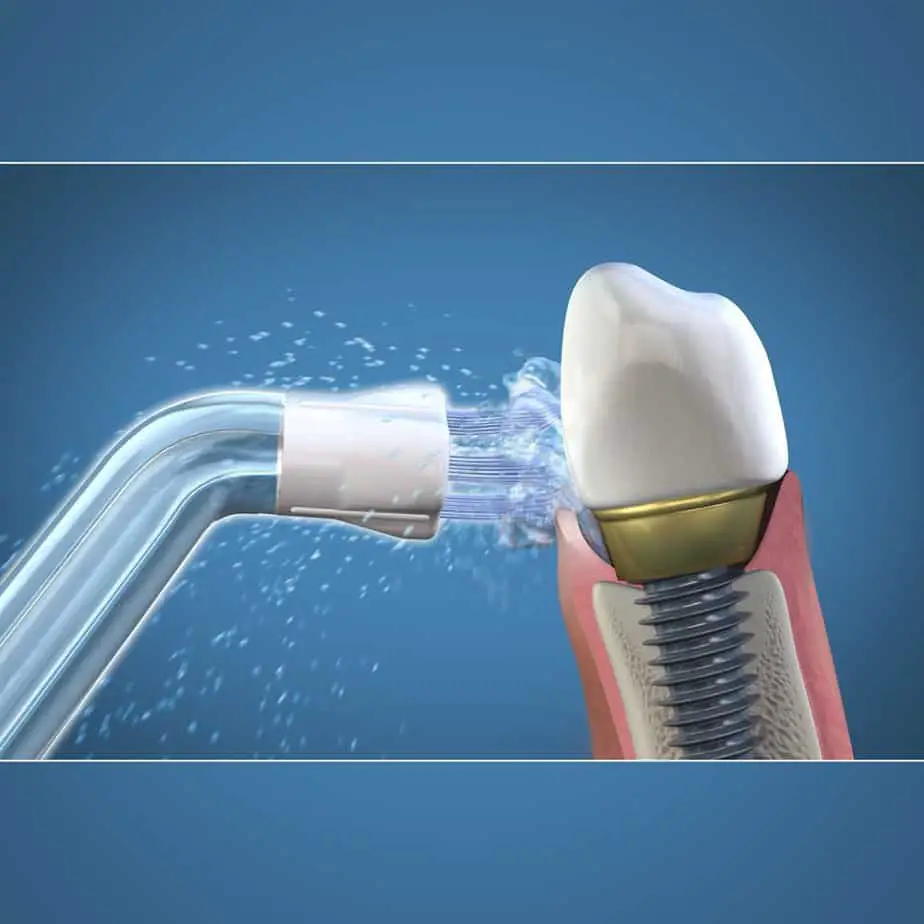
You have spent a lot of money on dental implants and/or bridges. It is important to take good care of them and keep them as clean as possible to ensure they don’t fail.
I am heartbroken when a patient of mine comes in, and the gum tissue is inflamed, or their implant is failing, or they have a cavity underneath their bridge and need a new one.
Prevention is the cheapest form of treatment. Follow my recommendations below to prevent gum disease around your implants/bridges!
I have compiled a list of resources to help you keep your expensive dental treatments healthy and prevent decay and failure.
I want to preface this by explaining briefly how implants and bridges fail due to controllable factors. Our mouths are full of bacteria, and complex biofilms exist on the mouth’s surfaces.

The biofilm is a complex colony of bacteria that multiply rapidly. It causes inflammation in the gum tissue and can also affect the bone tissue. This inflammation triggers the tissues to die off, causing gum recession and gum disease.
Because the biofilm produces acid, on natural tooth surfaces, the acid will begin to break down the tooth structure and cause tooth decay.
Managing the biofilm in your mouth will help to prevent the failure of your expensive investments in dental implants and bridges.
Flossing
Just like regular teeth, implants can fail due to gum disease. The best way to prevent this is to keep them clean by removing the biofilm.
There are other factors in implant retention; however, keeping them clean should be a top priority to protect your investment.
If your floss is too smooth, it won’t remove the bacteria and food debris, leaving them behind to continue to cause issues.
Regular dental floss is too thin to clean appropriately around implants and bridges. I prefer my patients to use something a little thicker and with a more rough surface area, such as spongy floss.
My favourite is Superfloss (Amazon link)
, which I recommend and show each patient who has an implant or bridge how to use.
The individual floss pieces have a hard end to thread through the teeth and a thick, spongy section in the middle to properly clean around implants and bridges. I included an image of the product below.

Interdental Brushes
I often prefer interdental brushes over floss, but only a specific brand because of its proven efficacy and unique measuring protocol to ensure the right brush size is used. The only brand I use is Curaprox, an elite Swiss dental brand that makes dental products of the gold standard.
Curaprox has a unique colour-coded system for accurately measuring the space between your teeth to ensure you use the correct size, as shown in the image below. Ask your dental professional to provide this service for you. It is essential.


I always compare it to buying a pair of shoes without knowing the size; you are guessing, and most likely, it will not fit properly on your feet.
If the brush is too small, it will not be as effective.
If the brush is too big, it can cause trauma to the soft tissue or not fit and, therefore, not cover as much surface area.
I recommend the Curaprox brand because the bristles are longer than the average interdental brush, they are made of polyester that does not absorb water or bacteria, and the wire is made of ultra-fine patented surgical wire that has been proven safe to use around implants and bridges.
The longer bristles cover more surface area and extend farther underneath the gumline, clearing away more biofilm and food debris.
I don’t use string floss anymore, I only use Curaprox interdental brushes.
Holly Verran RDH
The image below shows how the bristles clean the concavities between the teeth. (The image looks down on the biting surface of the teeth, and the brush is going in between the teeth where floss goes.)
Waterpik (one of the most underrated dental tools on the market)
Waterpiks are also very effective. They don’t replace flossing but are extremely effective at removing bacteria and food debris that floss misses.
The bacteria in your mouth that cause the most issues can’t live where there is oxygen, so using the Waterpik creates an environment where they cannot thrive.
If you want to learn more about the different bacteria that cause dental diseases, here is a great link from The National Center for Biotechnology Information that is easy to understand.
from The National Center for Biotechnology Information that is easy to understand.
Clearing away the biofilm allows your body to catch up on the healing process, making all the tissues around your implants and bridges healthy. Here is a link to purchase a cordless Waterpik (Amazon link) . I love this because it has a smaller footprint on your bathroom counter and is easy to grab for people with dexterity and grip issues.
. I love this because it has a smaller footprint on your bathroom counter and is easy to grab for people with dexterity and grip issues.
If you use a Waterpik or plan on getting one, the Plaque Seeker (Amazon link) tip is a must-have! The bristles will help remove bacteria and food debris from your dental implant and/or bridge.
tip is a must-have! The bristles will help remove bacteria and food debris from your dental implant and/or bridge.
Curaprox Single Brush
The Curaprox single brush is incredible for cleaning around dental implants and bridges. Its long, super-soft bristles extend under the gumline to clean around the implant or the curvatures of dental bridges.
The single brush can be found on Amazon here.
When you realize how much you love that brush, you can purchase the Curaprox Hydrosonic Pro (Amazon link) , which comes with a single brush designed to fit on an electric toothbrush. You can see the brush heads it comes with in the image below.
, which comes with a single brush designed to fit on an electric toothbrush. You can see the brush heads it comes with in the image below.
I recently switched to this electric toothbrush from the Oral-B electric and I will never go back!

Brushing
You can brush your implants and bridges the same way you would your normal teeth. Just be mindful of where your gum line is, as it can be lower than your other teeth. This is especially true for dental implants.
Picture your implant as a tree with a skinnier trunk (the metal post) and a large canopy of branches at the top (the crown). This means that there can be an indent under the crown. It can be easily missed when brushing!
Because of the shape of the implant, I recommend the smallest brush head possible to my patients, with the new Curaprox Hydrosonic Pro, which I linked above, comes with a very small single brush.
But if you prefer to use a manual, definitely try out the Curaprox Velvet toothbrush. It has 12,460 bristles and feels like butter on your gums. Because it has so many bristles, it covers more surface area, giving a superior clean.
The bristles are spread apart enough that the toothbrush can dry, and they are made of polyester that does not absorb water or bacteria, so the brush will last longer than the average toothbrush.
Did you know the average toothbrush has 500-800 bristles?
After surgery care
With the number of people I’ve seen undergo dental implant therapy, I can say that there usually isn’t much inflammation/swelling afterward. Of course, it depends on how extensive the treatment is. But it’s usually very straightforward.
You will want to take it easy after your surgery. If you have some swelling, using a cold ice pack or compress will help to reduce the inflammation!
The dentist/oral surgeon will give you all the resources you need for aftercare, but one thing I recommend is the Curaprox surgical toothbrush (Amazon link) . Many of the dental surgeons I refer to recommend this brush to their patients.
. Many of the dental surgeons I refer to recommend this brush to their patients.
I really hope this information will help you make your investments in dental implants/bridges last a very long time!
Have a great day,
Holly 🙂


